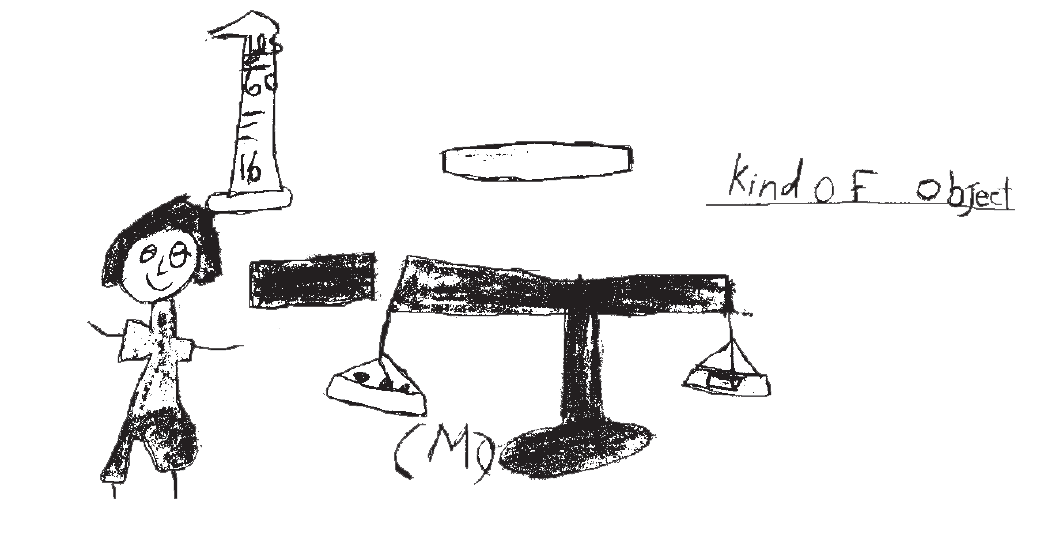Measuring Mass
Est. Class Sessions: 3Developing the Lesson
Part 1: Demonstrate the Lab and Draw the Picture
Demonstrate with Two-Pan Balance and Standard Gram Masses. Display the objects you gathered before the lesson for students to mass in the lab. See Materials Preparation. If students are to select objects to mass, be sure to group the objects with mass less than 100 grams separate from the objects with a mass of about 100 grams. Each student pair will find the mass of four objects from the first group and one from the second group.
Explain that students will find the mass of several objects. They will use the two-pan balance to find the mass of an object like they did in Lesson 3. Put one of the lighter objects in one pan, and place the standard masses in the other pan until the balance is level. During your demonstration, introduce and emphasize the different sizes of standard masses: 1 gram, 5 grams, 10 grams, and 20 grams. The gram is the basic unit used to measure mass.
As you level the balance, make sure students know which standard masses you are using and how many of each. Ask students to share their observations.
Ask questions such as:
Help students understand that to find the mass of an object with a two-pan balance, both pans need to be level at the beginning. To find the mass of an object, various standard masses are added until the pans are balanced. If one side is lower, more mass needs to be added to the other pan so the pans can balance. When the pans are balanced, the masses in the pans are equal. Once the pans are balanced, students can find the total number of grams in the pan to find the equivalent mass of the object.
Ask:
Remind students of the term variable used in earlier laboratory investigations. For example, in the lab Rolling Along in Centimeters, the variables were the things that changed, i.e., the different cars and the distance traveled.
Ask:
Draw a Picture. Ask each child to draw a picture of the materials, proceedure, and variables on Question 1 of the Measuring Mass pages using your demonstration as a guide. The pictures should communicate the important elements of the investigation as well as the two main variables. The pictures might include some of the objects the students would like to measure, the two-pan balances, and the standard masses. Including items such as these will make the procedure of the lab apparent as you examine the picture. See Figure 3 for a sample student picture.














